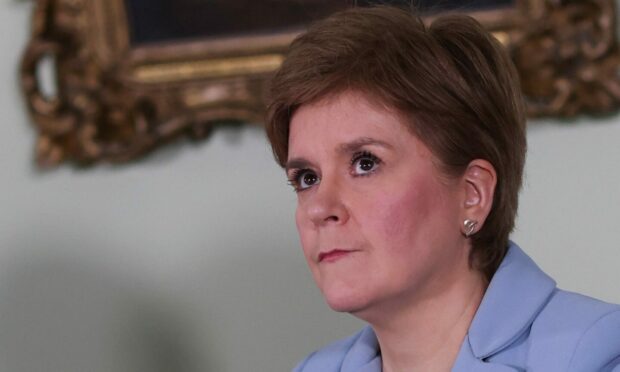Nicola Sturgeon is targeting unionist voters by claiming Boris Johnson is about to be replaced with a right-wing prime minister Scotland “wouldn’t vote for”.
But in an apparent softening of her position, the first minister said on Thursday she would be prepared to compromise to reach a deal with whoever takes over at Downing Street.
Ms Sturgeon claimed Scotland experiences a democratic “deficit” as she published her second paper in the run-up to her proposed referendum next year.
She announced her preferred timetable for October 19 2023 two weeks ago, teeing up a legal showdown with the UK Government.
Speaking today at her official residence, Bute House in Edinburgh, Ms Sturgeon said: “This discussion could not be more timely or urgent – the democratic deficit Scotland faces is not a recent phenomenon, but the evidence of it now is starker than ever.
“A prime minister with no democratic endorsement from Scotland is about to be replaced by yet another prime minister that Scotland hasn’t voted for – and wouldn’t vote for even if we were given the chance.”
‘Compromise’
Asked if her plans might be open to discussion with Mr Johnson’s successor, she reflected on how the SNP Government struck a deal when David Cameron was prime minister.
“In terms of the details, I’d be open to a negotiation, and in any negotiation you have to be prepared to compromise,” she said.
Other Nationalists have taken to protest-politics to make their point.
On Wednesday, her former SNP colleagues at Westminster – who split to form the Alba party – were escorted out of the Commons for making a pro-independence protest before prime minister’s questions.
Former Scottish justice secretary Kenny MacAskill and MP Neale Hanvey were suspended for five days for their intervention in chaotic scenes in Westminster.
Asked if she supported the move, Ms Sturgeon said she: “I didn’t pay that much attention to it, so I’m not going to focus on that.
“Protest always has a place. Ian Blackford was ejected from the House of Commons not that long ago.
“I’ve never been a member of the House of Commons, but I can understand for Scottish MPs how deeply frustrating that environment must be.
The vast majority of Scots don’t want a divisive second referendum next year.
– Tory constitution spokesman Donald Cameron.
At Holyrood, the first minister says the pro-independence majority is being sidelined despite pro-union claims it is the wrong time to be concentrating on a break-up.
Ms Sturgeon said: “The fact that the Scottish people have repeatedly elected a majority in the Scottish Parliament committed to an independence referendum is treated as immaterial.
“You don’t have to be a supporter of independence to know that’s not democracy.”
‘Wrong priority’
Conservative constitution spokesman Donald Cameron said Ms Sturgeon should focus on domestic problems.
“This SNP Government are once again focused on the wrong priority at the worst possible time,” he said.
“The vast majority of Scots don’t want a divisive second referendum next year, yet it seems that the SNP are only too happy to ignore democracy when it doesn’t go their way.”
The latest paper is titled Renewing Democracy Through Independence.
The first of the reports, published in June, was described as a “scene setter” document.
The Scottish Government paper highlighted economic areas where the UK is outperformed by a group of other European countries.
